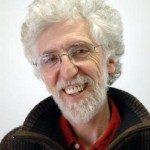Link to Pubmed [PMID] – 16505372
Proc. Natl. Acad. Sci. U.S.A. 2006 Mar;103(10):3669-74
The division of the living world into three cellular domains, Archaea, Bacteria, and Eukarya, is now generally accepted. However, there is no consensus about the evolutionary relationships among these domains, because all of the proposed models have a number of more or less severe pitfalls. Another drawback of current models for the universal tree of life is the exclusion of viruses, otherwise a major component of the biosphere. Recently, it was suggested that the transition from RNA to DNA genomes occurred in the viral world, and that cellular DNA and its replication machineries originated via transfers from DNA viruses to RNA cells. Here, I explore the possibility that three such independent transfers were at the origin of Archaea, Bacteria, and Eukarya, respectively. The reduction of evolutionary rates following the transition from RNA to DNA genomes would have stabilized the three canonical versions of proteins involved in translation, whereas the existence of three different founder DNA viruses explains why each domain has its specific DNA replication apparatus. In that model, plasmids can be viewed as transitional forms between DNA viruses and cellular chromosomes, and the formation of different levels of cellular organization (prokaryote or eukaryote) could be traced back to the nature of the founder DNA viruses and RNA cells.

